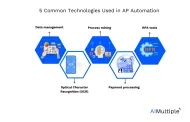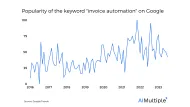In-Depth Guide Into Business Invoices in 2024
“Sales cures all” is a commonly accepted and mostly accurate piece of business wisdom. But sales does not translate to revenues if your company can not issue invoices. And your company can not deliver its services or products if it does not pay the invoices of its suppliers. Here, we explain all there is to know about invoices.
What is an invoice?
Invoice is a document that summarizes relevant details of a sale so the buyer can pay the seller.
According to Wikipedia:
An invoice, bill or tab is a document issued by a seller to a buyer, relating to a sale transaction and indicating the products, quantities, and agreed prices for products or services the seller had provided the buyer.
What does an invoice include?
Invoice is a semi-structured document. It includes both key-value pairs to include seller’s details and payment terms. It also includes tables to include the items that have been sold.
These are the typical fields in an invoice:
- Seller and recipient
- Name
- Address
- Seller bank account or other forms of payment details
- Gross and net amounts including currency
- Delivery date, invoice date, payment dates
- Items sold including each item’s
- Description
- Units sold
- Unit price
- Tax rate or amount
Which business processes rely on invoices?
All the following processes rely on invoices. As you may notice, these processes overlap. We wanted to cover all process terminology surrounding invoices:
- Procure-to-Pay: Also called Source-to-Pay (S2P) or Purchase-to-Pay (P2P), this process includes finding a supplier and making payments to the supplier.
- Invoice-to-Pay: The payment part of the Procure-to-Pay process.
- Accounts-Payable: Includes ensuring that company’s financial commitments are paid. Includes paying invoices but also paying out loans etc.
To learn about the AI applications in accounts payable, click here.
What are the different types of invoices?
Invoices can be split into several categories. For example, from the perspective of payment vs project completion, there are 6 types of invoices:
- Pro forma – to align on pricing
- Initial – for starting work
- Interim – for partial delivery
- Recurring invoice – for subscriptions
- Final invoices – for project completion
- Payment reminder – for unpaid payments
From the perspective of invoice automation in large companies, there are these important types of invoices:
Invoices that arrive via the company’s Electronic Data Interchange (EDI)
These documents are easy to automate as they arrive in JSON or XML format.
Invoices that correspond to purchase orders (PO)
If the company can extract the PO number from the invoice, all relevant details about the order can be retrieved from the company’s ERP system. Though these invoices are harder to automate than invoices that arrive via EDI, they are still not too difficult to automate. Extracting only one field is enough to automate the processing of these documents most of the time.
Invoices that do not correspond to purchase orders
These invoices are the hardest to automate since companies need to extract all relevant data from these documents. Companies should aim to reduce these as much as possible. However, it is not possible to eliminate all such documents. Despite company’s best efforts, most Fortune 500 deal with millions of such documents
For more on invoices
Hopefully, that clarifies what an invoice is and its purpose. It is important to automate the processing of this critical document to ensure an efficient operation. Feel free to read our research on:
Finally, if you believe your business could benefit from an accounts payable solution, we have a data-driven list of vendors prepared.
We can help you choose the best one suitable to your business:

Cem has been the principal analyst at AIMultiple since 2017. AIMultiple informs hundreds of thousands of businesses (as per similarWeb) including 60% of Fortune 500 every month.
Cem's work has been cited by leading global publications including Business Insider, Forbes, Washington Post, global firms like Deloitte, HPE, NGOs like World Economic Forum and supranational organizations like European Commission. You can see more reputable companies and media that referenced AIMultiple.
Throughout his career, Cem served as a tech consultant, tech buyer and tech entrepreneur. He advised businesses on their enterprise software, automation, cloud, AI / ML and other technology related decisions at McKinsey & Company and Altman Solon for more than a decade. He also published a McKinsey report on digitalization.
He led technology strategy and procurement of a telco while reporting to the CEO. He has also led commercial growth of deep tech company Hypatos that reached a 7 digit annual recurring revenue and a 9 digit valuation from 0 within 2 years. Cem's work in Hypatos was covered by leading technology publications like TechCrunch and Business Insider.
Cem regularly speaks at international technology conferences. He graduated from Bogazici University as a computer engineer and holds an MBA from Columbia Business School.
To stay up-to-date on B2B tech & accelerate your enterprise:
Follow on

Comments
Your email address will not be published. All fields are required.